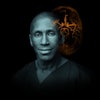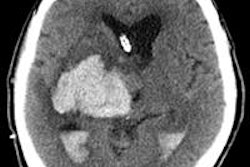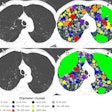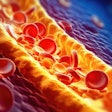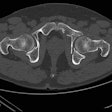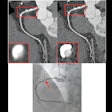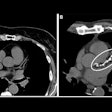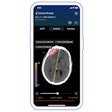An analysis of CT utilization data at a large health insurance plan suggests that myriad factors -- including physician ownership of the practice and the government insurance status of the patient -- shape the likelihood that a patient will receive a CT scan.
But these factors weren't definitive in making the decision to order a scan and didn't define the use or overuse of CT, according to the researchers from Minnesota and Arizona. They cited a broad range of influencing factors, including patient age and gender, disease severity, and treatment course, as shaping the likelihood of a scan.
"High referral rates were not associated with a referring physician's affiliation with the provider of the scan," wrote James Begun, PhD, from the University of Minnesota; William Riley, PhD, from Arizona State University; James Hodges, PhD, from the University of Minnesota, and colleagues. "In sum, none of the associations suggested an obvious problem with overutilization" (Journal of the American College of Radiology, January 2014, Vol. 11:1, pp. 51-58).
What influences the decision to scan?
Still, the results raise questions about what influences CT scanning decisions, as well as suspicions about whether external factors -- such as whether a physician is part owner of an imaging facility -- have been adequately addressed by current limitations on physician referrals. They have not been fully studied, and only more research can provide the answers, according to the authors and a panel of external reviewers.
"Self-referral of scanning to facilities in which the physician has an ownership interest remains a strong concern in the literature and in the opinion of this project's external reviewers," the authors wrote. "Studying the effect of ownership interest on referral for scans requires accurate identification of the referring physician and a valid and reliable measure of ownership interest."
The analysis included 310,467 CT scan claims representing 109,315 patients from 2009 and 2010. The patients were part of a health plan serving approximately 1.5 million members in the upper Midwestern U.S.
Patients who received CT scans and their referring physicians were classified into utilization categories based on patient, disease, physician, and physician organization characteristics, the study team wrote.
Patients who received fewer CT scans were also compared with those who received more scans based on a variety of characteristics, and the authors identified characteristics distinguishing higher from lower utilization categories. The four physicians in the independent analysis group then reviewed the evidence for signs of potential overutilization.
Results: Patient variables
Patient characteristics that distinguished higher from lower utilization of CT scans were male gender, older age, government insurance coverage, seeing more total providers, using more prescription and total resources, and classification as frail and having higher disease severity.
For example, higher CT utilization was significantly associated with male gender (p < 0.0001); men comprised 41.1% of low utilizers versus 49.2% of high utilizers. Older patients were also scanned more. The birth year of high utilizers was approximately 1957, compared with 1951 for moderate utilizers (p < 0.0001), Begun and colleagues wrote.
The median education level of residents in a patient's ZIP code wasn't significantly associated with CT utilization, but median family income in the ZIP code, which declined significantly between low and moderate utilization, was moderately associated with utilization.
The team also found that high and moderate utilization patients were more likely than low utilizers to have government insurance. Follow-up analysis also showed that patients with government insurance were members of higher disease severity treatment groups.
Patients receiving more CT scans were also likely to see more providers, with an average total provider count of 14.1 for low utilizers, 24.1 for moderate utilizers, and 29.7 for high utilizers. Patients with more scans used more medical resources overall, with low utilizers at 3.7 on a five-point scale, moderate utilizers at 4.4, and high utilizers at 4.5 (all statistically significant). A cost resource analysis also showed that total resource and prescription costs rose with increasing CT utilization.
Finally, frail patients were more likely to receive more scans: 16.2% of low utilizers were considered "frail," compared with 28.5% of moderate utilizers and 34.7% of high utilizers.
Physician characteristics
Referring physicians in the higher utilization categories were more likely to be in group practice, board-certified, and male, and the differences were statistically significant. For example, 65.7% of physicians in the lowest referral category were board-certified, 81.3% in the second category, and 85.0% in the three highest categories, the study team wrote.
Physician specialties accompanying higher utilization rates (10 or more claims) were oncologists, general surgeons, neurosurgeons, urologists, and internists.
Ownership interest in the practice was associated with a higher volume of claims in a curvilinear manner, peaking at the midlevel volumes of 25 to 49 claims, and at a 59% ownership level in the practice.
Increases in ownership interest were not significant between low and moderate utilization levels; however, the declines in ownership interest from 59% to 51% to 45% at higher volume levels were statistically significant.
About 85% of all referring physicians belonged to group practices. Higher referral counts were more likely to come from single-specialty groups (p < 0.001), and more referrals came from groups that were smaller in size (p < 0.001).
For example, small group practices of six or fewer physicians averaged 4.3 scans per provider, compared with 1.04 scans per provider in groups larger than 42 physicians. The groups with the highest referral per provider rates (more than 20 per provider) were primarily small single-specialty practices. However, ownership interest was not associated with claims per provider in groups, the authors wrote.
The external review group took a special interest in the association of male gender of patients and physicians with higher utilization. The group found that more male physicians were board-certified, and that male patients had higher treatment group severity.
Meanwhile, the association of scan referral volume with board certification may simply reflect the effect of advanced training on the ordering of specific diagnostic tests, the authors wrote. In any cases, high referral rates weren't associated with the referring physician's affiliation with the scan provider, and none of the associations showed an obvious overutilization problem.
Still, the use of aggregate insurance claims may be too blunt a tool to reveal patterns of overutilization, the authors noted. They suggested future research directed at more refined subsets of claims and offered the following suggestions:
- A focus on specific medical conditions
- Intense review of claims of high utilizers
- Developing and testing measures of ownership interest to ensure that this factor does not influence scanning decisions
- Investigating radiation mitigation strategies
Insurance claims are inherently limited as they do not include comprehensive information about the patient, disease status, and treatment, the authors wrote.
"Claims data from one insurer confirm that a small proportion of patients are exposed to large numbers of CT scans," they wrote.
The panel of four external reviewers determined that the findings "generally matched their expectations based on their professional experience, and that the empirical relationships had plausible explanations based on reasonable medical decision-making," Begun and colleagues wrote.
"Claims research that examines particular conditions and patients with high utilization rates and physicians with high referral rates would advance the evidence base for quality improvement," the authors concluded.

